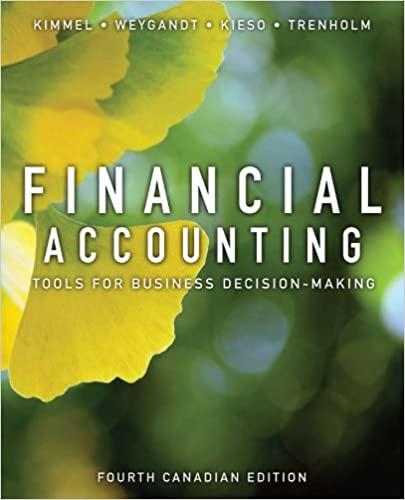









Information below comes from the financial statements of Rosson Company. Rosson Company Income Statement Year 2 Year 1 Revenues: $299,000 $246,000 Net Sales 9,000 8,000 Other Revenues 307,000 255,000 Total Revenues Expenses: 138,000 Cost of Goods Sold 172,000 40,000 SG&A Expenses Interest Expense 44,000 4,500 4,000 25,400 Income Tax Expense 31,000 Total Expenses Income before Discontinued Operations Discontinued Operations Gain (net of tax) 207,900 251,000 56,000 47,100 9,000 $ 47,100 $ 65,000 Net Income d. Calculate the following solvency ratios for Year 2 and Year 1: (1) debt-to-assets ratio, (2) debt-to-equity ratio, (3) number of times interest is earned, and (4) plant assets to long-term liabilities. c. Calculate the following profitability ratios for Year 2 and Year 1: (1) net margin, (2) asset turnover, (3) return on investment, and (4) retum on equity. f. Calculate the following stock market ratios for Year 2 and Year 1: (1) earnings per share, (2) book value per share, (3) price-earnings ratio, and (4) dividend yield. a. Rosson Company Horizontal Analysis of Income Statements Year 2 % Change Year 1 Revenues: $299,000 $246,000 8,000 307,000 Net Sales 9,000 Other Revenues 255,000 Total Revenues Expenses: Cost of Goods Sold SG&A Expenses Interest Expense Income Tax Expense Total Expenses 138,000 40,000 172,000 44,000 4,000 31,000 251,000 207,900 4,500 25,400 Income before Discontinued 47,100 56,000 Operations Discontinued Operations (net of tax) 9,000 $ 65,000 $ 47,100 Net Income c. Liquidity Ratios Working Capital $130,500 (1) Year 2 $107,000 Year %3D 1 Year 1 Year 2 (2) Current Ratio to %3D to 1 %3D Year 1 Year 2 (3) Quick (Acid-Test) Ratio to to 1 Year 2: Year 1: Year 1 (4) Year 2 Accts. Receivable Turnover times times (5) Avg. Days to Collect Receivables Year 1 Year 2 days days (6) Inventory Turnover Year 1 Year 2 times times 3 (7) Avg. Days to Sell Inventory Year 2 Year 1 %3D %3D days days II %3D d. Solvency Ratios (1) Debt to Assets Year 1 Year 2 %3D (2) Debt to Equity Year 1 Year 2 %3D = 79.4% 123.2% (3) Times Interest Earned Year 1 Year 2 times times *Before discontinued operations gain Year 1 Year 2 (4) Plant Assets to LT Liab. to 1 _to 1 e. Profitability Ratios (1) Net Margin Year 1 Year 2 %3D Year 1 Year 2 (2) Asset Turnover %3D 4 %3D II e. Profitability Ratios, continued (3) Return on Investment Year 1 Year 2 _% Year 1 (4) Return on Equity Year 2 f. Stock Market Ratios (1) Earnings per Share Year 1 Year 2 Year 1 Year 2 (2) Book Value per Share =%24 (3) Price-Earnings Ratio Year 1 Year 2 Year 1 Year 2 Dividend Yield I3D Information below comes from the financial statements of Rosson Company. Rosson Company Income Statement Year 2 Year 1 Revenues: $299,000 $246,000 Net Sales 9,000 8,000 Other Revenues 307,000 255,000 Total Revenues Expenses: 138,000 Cost of Goods Sold 172,000 40,000 SG&A Expenses Interest Expense 44,000 4,500 4,000 25,400 Income Tax Expense 31,000 Total Expenses Income before Discontinued Operations Discontinued Operations Gain (net of tax) 207,900 251,000 56,000 47,100 9,000 $ 47,100 $ 65,000 Net Income d. Calculate the following solvency ratios for Year 2 and Year 1: (1) debt-to-assets ratio, (2) debt-to-equity ratio, (3) number of times interest is earned, and (4) plant assets to long-term liabilities. c. Calculate the following profitability ratios for Year 2 and Year 1: (1) net margin, (2) asset turnover, (3) return on investment, and (4) retum on equity. f. Calculate the following stock market ratios for Year 2 and Year 1: (1) earnings per share, (2) book value per share, (3) price-earnings ratio, and (4) dividend yield. a. Rosson Company Horizontal Analysis of Income Statements Year 2 % Change Year 1 Revenues: $299,000 $246,000 8,000 307,000 Net Sales 9,000 Other Revenues 255,000 Total Revenues Expenses: Cost of Goods Sold SG&A Expenses Interest Expense Income Tax Expense Total Expenses 138,000 40,000 172,000 44,000 4,000 31,000 251,000 207,900 4,500 25,400 Income before Discontinued 47,100 56,000 Operations Discontinued Operations (net of tax) 9,000 $ 65,000 $ 47,100 Net Income c. Liquidity Ratios Working Capital $130,500 (1) Year 2 $107,000 Year %3D 1 Year 1 Year 2 (2) Current Ratio to %3D to 1 %3D Year 1 Year 2 (3) Quick (Acid-Test) Ratio to to 1 Year 2: Year 1: Year 1 (4) Year 2 Accts. Receivable Turnover times times (5) Avg. Days to Collect Receivables Year 1 Year 2 days days (6) Inventory Turnover Year 1 Year 2 times times 3 (7) Avg. Days to Sell Inventory Year 2 Year 1 %3D %3D days days II %3D d. Solvency Ratios (1) Debt to Assets Year 1 Year 2 %3D (2) Debt to Equity Year 1 Year 2 %3D = 79.4% 123.2% (3) Times Interest Earned Year 1 Year 2 times times *Before discontinued operations gain Year 1 Year 2 (4) Plant Assets to LT Liab. to 1 _to 1 e. Profitability Ratios (1) Net Margin Year 1 Year 2 %3D Year 1 Year 2 (2) Asset Turnover %3D 4 %3D II e. Profitability Ratios, continued (3) Return on Investment Year 1 Year 2 _% Year 1 (4) Return on Equity Year 2 f. Stock Market Ratios (1) Earnings per Share Year 1 Year 2 Year 1 Year 2 (2) Book Value per Share =%24 (3) Price-Earnings Ratio Year 1 Year 2 Year 1 Year 2 Dividend Yield I3D
















